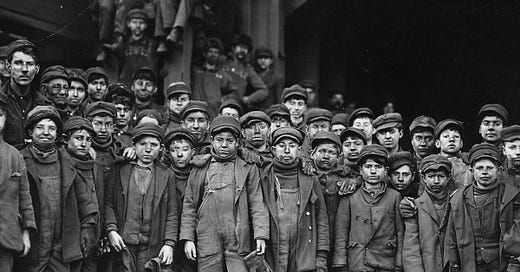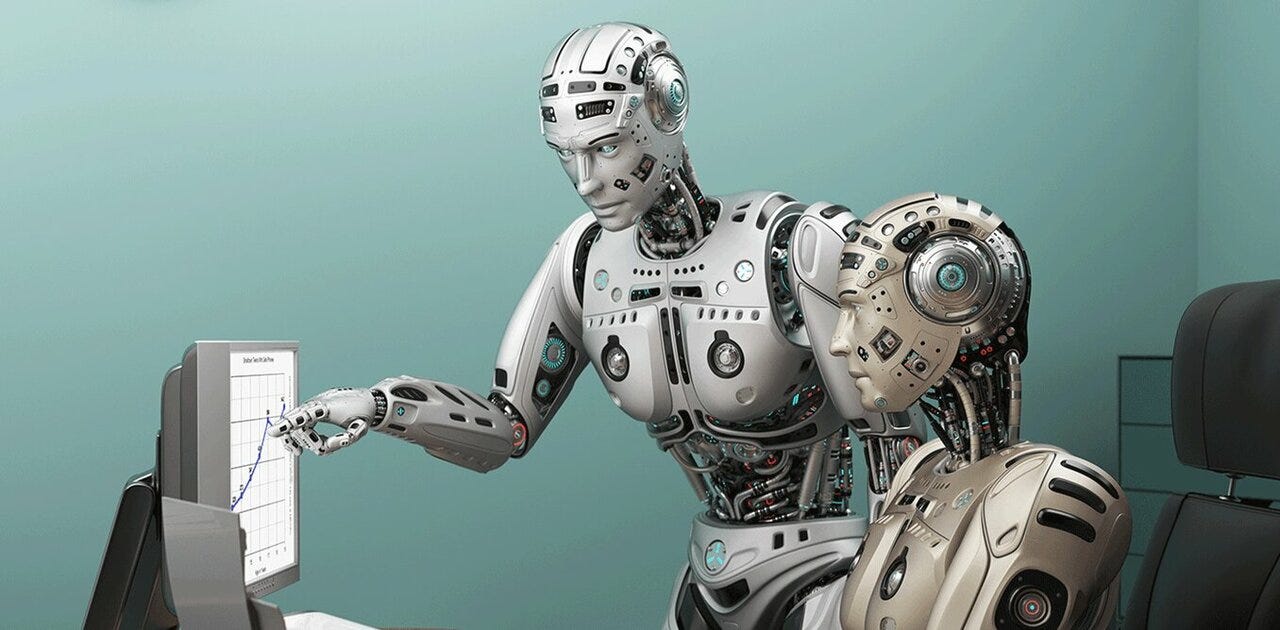“A person’s a person, no matter how small.”
-Dr. Seuss-
Kids working is an art form as old as time. What began as a fun way to encourage young Oltharg to be responsible and clean his cave, is now the backbone of entire global industries. According to official figures, around one out of every 10 children worldwide works as a child laborer, with the percentage rising to one out of every five children in developing nations.
You want shoes? Put a kid to work. You want cobalt for your tech? Put a kid to work. How about some diamonds? Put a kid to work. How about we eat some freshly slaughtered meats? Put a damn kid to work.
In Iowa and Minnesota lawmakers are considering changing the child labor laws to support workers as young as 14. The argument is that people are not returning to work because of the pandemic, and the only way to fill this labor shortage is to open the market to fresher labor. On the adult workers side of this discussion, they are simply requesting higher wages and expanded benefits in efforts to bring them back into this workforce. In a world where CEO’s on average make 400X what their employees do, I am a minor (pun intended) bit skeptical that these companies are concerned about labor shortages as opposed to creating an always existing cheap faucet of labor they can exploit.
For example, The Labor Department recently said it found 102 children as young as 13 working hazardous overnight jobs cleaning slaughterhouses in eight states in what it called a “corporate-wide failure” by one of the largest food sanitation companies in the country, Packers Sanitation Services Inc. Packers Sanitation Services paid a $1.5 million fine for the violations, a fine amount that averaged around $15,138 for each minor who was employed in violation of the law.
Given the cost of the fine barely outpaces the wages they would need to raise to bring in an adult workforce, it is somewhat easy to see why a company such as Packers might utilize child labor, instead of upgrading their benefits. The bottom line must win out at all costs. Their company motto is to keep food safe for everyone. Nothing screams food safety to me (or cutting at the expense of it) like having some roblox dreaming stranger thing run heavy machinery to clean up bovine guts.
“To take children seriously is to value them for who they are right now rather than adults-in-the-making.”
-Alfie Kohn-
CEO’s aren’t stopping at child labor as an innovative workforce solution either. Generative AI is also doing its part to replace the current labor market depending on your career as well.
IBM CEO Arvind Krishna recently stated that AI can solve the labor shortage problem globally. "We do have a shortage of labor in the real world and that’s because of a demographic issue that the world is facing... the United States is now sitting at 3.4% unemployment, the lowest in 60 years. So maybe we can find tools that replace some portions of labor, and it’s a good thing this time," Krishna told the Financial Times.
It is reassuring to know someone with a networth of over $33 million dollars, who makes over $3.8 million dollars a year annually for salary, is excited to see labor reductions and deems them “good things”. We have yet to confirm with his people, but other possible “good things” in Krishna’s business philosophy include extreme hunger, forced and unforced injuries, incurable sicknesses, and barely affordable mustache waxes.

AI has been doing such a good job, that it is now being promoted into the world of Human Resources where it will assist with figuring out which humans no longer need to work at their company. I mean, what could be more human and resourceful than a robot? Let’s hope they still want to fill our coolers with water, our pots with hot coffee, and that they awkwardly get too inebriated with Janice from accounting at the annual holiday party.
I’m being outpaced by creative labor solutions. With an increasing confusion and encroaching fear I decided to get to the bottom of both of these economic phenomena. Could a kid do my job? Or a robot? Do I even know how to work anymore?
Enterprising investigative journalist that I am, I decided to get right to the source of my FOMOs. Taking advantage of a weekend around America’s youth in the snowy mountains of California I took it upon myself to ask a handful of children ages 3 to 14 what they think about the core economic issues of this moment.
The following is an unedited excerpt of real child labor (in that I convinced these kids to answer me these questions in exchange for some chocolate covered gummy worms). I have anonymized the kids below so they quit throwing things at me and pulling on my hair.
“It is easier to build strong children than to repair broken men.”
-Frederick Douglass-
HOW EARLY DO YOU THINK KIDS SHOULD START WORKING?
Girl, 8 years old: 18 years old.
Boy, 6 years old: No.
Boy, 5 years old: At 30.
Boy, 6 years old: When they are 17.
Boy, 14 years old: I am working now. I just worked with you to clear that deck lol.
Girl, 3 years old: Awkward silence and I am handed a pencil.
Lady Baby, 0 years old: Coos.
WHAT KIND OF WORK SHOULD KIDS DO?
Girl, 8 years old: Kids could be veterinarians, animal holders, or reptile carers.
Boy, 6 years old: No.
Boy, 5 years old: Stares longingly at a sled.
Boy, 6 years old: Helping their moms and dads.
Boy, 14 years old: Digging, shoveling, cleaning.
Girl, 3 years old: Bites her hand.
Lady Baby, 0 years old: Small amounts of drool exit the left side of the mouth.
WHAT DO YOU THINK ABOUT ROBOTS?
Girl, 8 years old: They are good. They are good because they are electronical and they can do things for people. They are also bad because they can maybe make pollution.
Boy, 5 years old: They’re nice. Because when somebody is in trouble they help them.
Boy, 6 years old: No.
Boy, 6 years old: They are really big and made out of metal.
Boy, 14 years old: They are cool.
Girl, 3 years old: Tosses paper on the ground.
Lady Baby, 0 years old: Small amounts of drool exit the right side of the mouth.
WOULD YOU LIKE TO WORK WITH ROBOTS WHEN YOU GROW UP?
Girl, 8 years old: I would like to work with the robots because they will maybe do what you tell them to. I would not want to work with robots if they turn evil.
Boy, 5 years old: Yes, because I really like them.
Boy, 6 years old: No.
Boy, 6 years old: Yes, because they are so big and you can control them.
Boy, 14 years old: I’d like them to do my math homework for me.
Girl, 3 years old: Runs in a circle waving arms.
Lady Baby, 0 years old: Pukes onto my sweater.
IF YOU WORKED WITH A ROBOT WHAT KIND OF WORK WOULD YOU DO?
Girl, 8 years old: I like working with animals. Maybe we would train animals or help wounded animals.
Boy, 5 years old: I would follow the robot’s commands.
Boy, 6 years old: No.
Boy, 6 years old: I would control it 17 times a day. I would control it to set me free from my house. I want to be able to run away from mom and dad.
Boy, 14 years old: I would race cars.
Girl, 3 years old: Does a somersault.
Lady Baby, 0 years old: Reaches for a diaper change.
“The future depends on what you do today.”
-Mahatma Gandhi-
Perhaps all my fears are irrational. Based on these conversations the children are ready to work, and ready to work with adults and robots. Sure maybe they are concerned of of the ecological impact of robot technology, but they also see a future wherein we can collaborate with these new entrants into our complex world economy and accomplish things like space exploration or running away from home.
Writing for opendemocracy.org, author Michael Bourdillion notes “children’s work can result in improvements to the quality of life for themselves and for their families. When we recognise the developmental as well as material benefits that work can and does confer to children, we can divert misguided attention away from abolishing labour, to focus instead on the urgent task of removing harm from children’s work where it exists and ensuring that children truly benefit from the work they do.”
It would appear that the future holds hope for great collaboration between these new labor markets. And while machine learning CEO’s might be licking their lips to replace existing talent pools with cheaper labor, they are also optimistic that the innovations will lead to new work for the existing labor class. 60% of the types of jobs people are doing today didn't even exist in the 1940s.
If your current job is replaced by a kid or a robot it might be time to get innovative yourself. The economic powers that be have already determined that creative (read using child or slave labor) and automated workforces (read exploiting artist labor costs by having robots rip them off) are their solution to a global labor shortage (read people don’t want to work for non-living wages but we’ll blame it on a lack of people instead).
Let’s remember that without adults, we wouldn’t have had kids or robots in the first place. Instead of worrying about what the children and AI are up to, we can instead differentiate our value by focusing on our core strengths.
Adults are better learners than children and have better social skills than robots. So let’s party and gain wisdom from our new colleagues. There is room enough where we can all work together. And as we grow older we can do just as they have done before us.
Drool, puke and get someone to change our diapers.









Excellent
This is amazing. 10/10